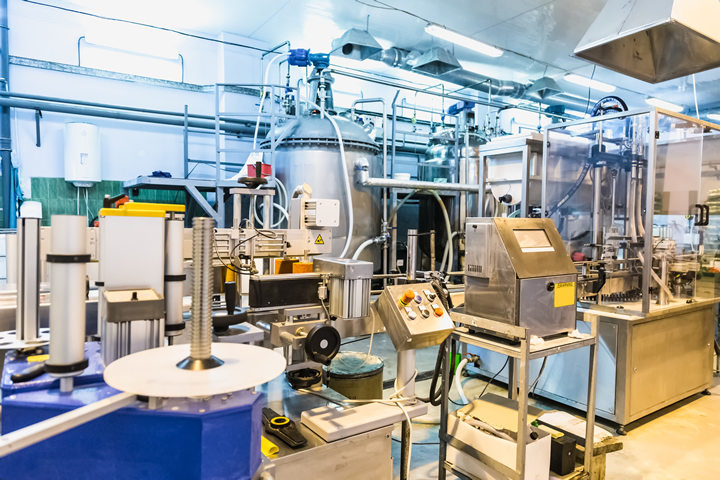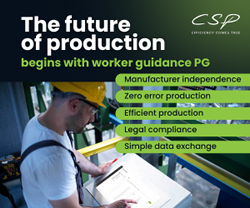Ready to Optimize? Why VFDs Are a Game-Changer for Manufacturing Efficiency

Variable frequency drives (VFDs) are the natural evolution of static electric motors. They are one of the most prominent ways to visualize the growth of industrial work. VFDs are technical manifestations of the sector’s current priorities — efficiency, sustainability and innovation. Discover the primary areas in which they optimize manufacturing settings for higher productivity and scalability.
Optimized Energy Consumption and Dynamic Load Profiling
Standard motors are fixed, operating at a constant power and speed until they inevitably need maintenance or fail. Few manufacturing processes require the same energy behind them, and VFDs take this reality into account. Operations should save energy when possible instead of wasting it because of mechanical constraints.
Dynamic load profiling is a VFD-specific feature that automates responsive energy management. Instead of using the exact amount of power all the time, VFDs consider the application, materials and connected equipment to determine their activity. These can be helpful in mechanical equipment and in the products manufacturers produce, including pumping and HVAC systems.
Adaptability is essential for designing leaner manufacturing practices. VFDs prevent copious waste heat, leading to better temperature regulation within machinery as a by-product. This promotes longevity and higher performance rates more consistently. Because VFDs’ understanding of load profiling is more nuanced, they are the best tool for right-sizing. This leads to energy savings and preserves operational expenditures, promoting sustainability goals and productivity gains.
Enhanced Process Control and Precision
Technicians have always been able to use control panels to manipulate an engine’s torque and speed, but this task becomes more precise with VFDs. There are more customization options, giving workers greater opportunities to curate the motor to specific projects. Delicate operations, like material handling or mixing, can have too many variables between formulations to delegate the motor to a fixed state.
Process controls for VFDs become even better by integrating Industry 4.0 and 5.0 staples, empowering both manual and programmed tasks. Controllers can have embedded artificial intelligence, sensor-based technologies like the Internet of Things (IoT), or compatibility with digital twins. Over time, they learn how to perfect each use case, reacting to process orders accordingly to reduce downtime and obstacles related to changeovers.
This will minimize defects and improve quality control, as human error is slowly eliminated. Then, workers can oversee the adjustments that the equipment with VFDs makes to accommodate each type of machine and product. Many use proportional-integral-derivative algorithms for this reason, making processes more repeatable and closed-loop. This also encourages lean practices by optimizing as much of the material as possible with little scrap.
Extended Equipment Lifespan
VFDs produce lower mechanical stresses on machinery compared to conventional motors because they do not always produce intense pressure or energy. Components like the DC bus prevent AC ripples from influencing capacitors, stabilizing the output. Legacy tools need more maintenance and repairs because of this. Handling them to prepare for downtime or scheduled fixes can also put more stress on them because of how rapidly they have to decelerate and power down. VFDs soften long-term wear and tear.
They are able to stop and start more progressively, which means slower degradation of essential components like belts and bearings. Some of these peripherals are the most common to replace or maintain, so preserving their abilities by focusing on their most significant influence — the VFD — is crucial.
Manufacturing facilities need lifespan optimization because it encourages big-picture goal-setting and process discovery. Many productivity enhancements focus on short-term revenue gains or meeting critical deadlines. However, the eventual savings and stress lowered from other VFD benefits discourage obsolescence and are part of the reason industry leaders have already adopted them.
Predictive Maintenance and Condition Monitoring Integration
The equipment will require less maintenance, and the attention it does need will be predicted with more advanced notice. The IoT and AI integrations will collect data over time, logging it while they analyze real-time information. The VFD will be able to monitor processes when technicians are unable, while also performing automated diagnostics for future maintenance schedules. The knowledge also discourages unnecessary parts usage, optimizing asset utilization.
The foresight prevents catastrophic failures that could cause financial and equipment losses. It also helps employees feel safer when interacting with machinery if they can stave off the worst circumstances with data-driven decision-making.
VFDs reduce the chances of these circumstances arising because they are constantly aware of energy consumption, fault conditions and component health. They can measure key performance indicators, including but not limited to:
- Temperature
- DC bus boltages
- Computer temperatures
- Cooling system health
Interoperability With Automation Ecosystems and VFDs
Digital transformation in manufacturing has been happening for years. Leaders can feel confident investing in VFDs because they are compatible with most industrial automation systems. Therefore, prior expenses related to adopting new technologies feel supportive and growth-focused instead of like a risk.
For example, programmable logic controllers and supervisory control and data acquisition systems have become more commonplace. They are invaluable tools that upcoming technologies should be able to empower instead of render obsolete. VFDs make these existing systems run even more efficiently, giving plant operations better visibility over their newest integrations for faster cost-benefit analyses and return on investment.
VFDs are also compatible with numerous communication protocols, such as Modbus and Ethernet. This makes the transmission of information between connected systems seamless for both data scientists and technicians. Data exchange must happen without error, as programming an automation could easily lead to misconstrued numbers about motor performance. Fortunately, the focus on interoperability makes this less common than other communication systems.
VFD Benefits and Their Future in Advanced Manufacturing
Every advantage a VFD brings to a manufacturer gives it a more prominent reputation in the sector. VFDs can be a powerful yet understated foundation for this momentum, especially when solving pain points like maintenance burdens and worker shortages.
To support the upcoming generation of rapid development and technological growth, antiquated motors and related components must be phased out. To facilitate this change, stakeholders should plan to adopt new workflows and technical knowledge.
Featured Product

